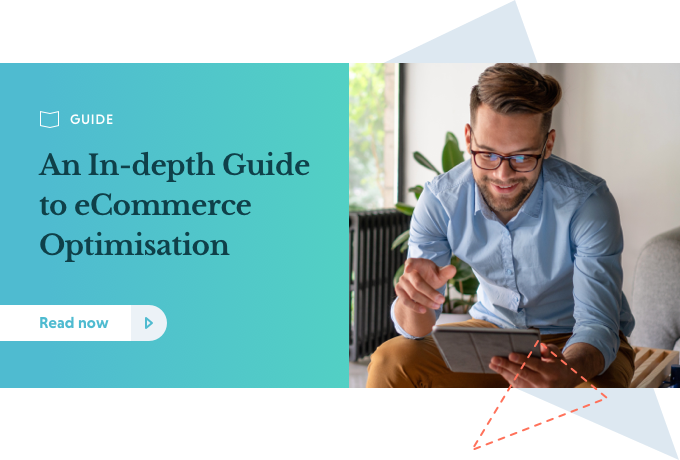As we move into 2020, the eCommerce market continues to grow, presenting a range of additional opportunities for those working within the industry. And, customer expectations have evolved alongside it, creating brand-new challenges for eCommerce sites.
To stay competitive (let alone succeed) in such a crowded industry, eTailers must offer the best shopping experience possible. A key part of this is personalisation: the practice of providing customers with relevant products, offers, and promotions that, as well as streamlining the buyer’s journey, gently entice them towards making additional purchases.
From dynamic site search functionality and the machine learning tools that power them, there are a range of purpose-built solutions that improve the overall user experience. But identifying them and knowing how to leverage them effectively are two very different things.
So, to help eCommerce sites stay one step ahead of the industry, we created the eCommerce Optimisation Guide 2020.
The biggest challenges in eCommerce: 2020
A collaborative project between Loop54, Nosto, and Voyado, the guide examines the biggest challenges facing eCommerce within the wider context of the buyer’s journey, and the optimal solutions to these problems.
The guide is split into five distinct parts, each representing a different stage of the buyer’s journey. These are:
- Awareness
- Consideration
- Decision
- Purchase
- Post-purchase
Awareness
The average visitor takes just 50 milliseconds to decide whether or not they like a site. For those at the awareness stage of the buyer’s journey, the appearance of your site has a direct impact on their purchasing decision.
Our guide explains how those in eCommerce can combat this knee-jerk reaction by personalising their homepage and directing prospective customers towards relevant content, thereby creating a more engaging experience.
We also investigate things from the perspective of the shop owner, discussing how things like Facebook lookalike audiences and 'Social Proof' help them generate and retain interest in their products.
Consideration
The consideration stage refers to the process of conducting research into relevant products; the goal being to create a shortlist of viable options.
For eCommerce sites, this makes it absolutely vital that the correct products are put in front of customers every time.
With that in mind, our guide highlights the tools that enable eCommerce sites to do just this: from implementing AI that's capable of understanding user intent and automated personalised category merchandising, to intuitive search tools that provide relevant results regardless of taxonomy or spelling mistakes.
Decision
Once a customer has decided to make a purchase, it's important to provide with them with all the relevant information they need to assure them they're making the right choice.
In this section, we highlight the ways you can use marketing automation, customer segmentation, filters and faceted navigation, advanced search algorithms, and dynamic bundling to provide a more personalised experience for every customer.
Purchase
Just because someone has bought a product on your site in the past, doesn’t mean they will do so again in the future. Particularly if the checkout experience presents unnecessary barriers and complications.
Here, we explore the techniques eCommerce sites can employ to improve brand loyalty and encourage repeat purchases. For instance, by using personalised ‘customers also bought’ recommendations to guide them towards related products and dynamic pop-ups requesting the customer’s email address in return for more information on relevant limited-time discounts.
Post-purchase
The final part of our guide investigates the importance of creating a positive and personalised experience post-purchase.
Our primary focus is marketing automation and how it can be used to encourage customers to make additional purchases. In particular, we highlight the benefits of including product recommendations in transaction confirmation emails (which boast by far the best open rates for eCommerce sites) to up-sell related or matching products.
Adapting to an ever-shifting landscape
Whether you’re new to the world of eCommerce or are looking for ways to improve the customer experience on your site, the eCommerce Optimisation Guide 2020 is a must-read.
Please get in touch if you have any additional questions about creating personalised customer experiences or eCommerce in general.
Topics:


